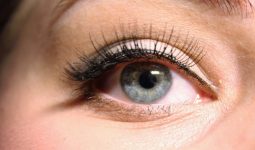When you choose a nail polish, you’re probably drawn to the vibrant colors, the brand’s reputation, or the longevity of wear promised on the label.
Yet, there is an important factor that often goes unnoticed: the potential toxicity of certain nail polish ingredients.
Some nail polish brands contain chemicals that can be harmful to both your nails and your overall health.
Most of these brands have made their way to the top of the beauty chain due to years in the market, but the same brands you’ve trusted might be the ones to reconsider.
Understanding which nail polish brands to avoid becomes crucial in maintaining good nail health and minimizing exposure to toxic chemicals.
Through numerous studies and research, certain toxins have been identified that could cause adverse effects, ranging from skin irritations to more severe health concerns with long-term exposure.
Proactively selecting nail polish that steers clear of these harmful ingredients not only benefits your health but also supports eco-friendly and ethical beauty standards.
1. OPI
When exploring nail polish brands, you might come across OPI, a popular choice among enthusiasts for its vast color range and durability.
However, it’s vital to consider the ingredients and formulation of the products you use.
OPI has made efforts to reformulate their products, but there are still discussions about the safety of their ingredients in the nail polish community.
Ingredients to be Cognizant of:
- Toluene: Historically used in some nail polishes for a smooth finish.
- Formaldehyde: Sometimes found in nail hardeners.
- DBP (Dibutyl Phthalate): Used to prevent chipping.
Comparison with Other Brands:
- Sally Hansen: Also offers a variety of products, some of which are now 3-free.
- Revlon: Has been reported to remove certain harmful chemicals from its formulas.
- Maybelline: Offers an extensive range of nail polishes; ensuring a check on the ingredient list is advisable.
- Chanel: High-end brand noted for luxury polishes, now formulating without some controversial chemicals.
It’s important to acknowledge that many nail polish brands, including OPI, are transitioning to safer formulations, moving towards “3-free” (free from toluene, DBP, and formaldehyde) and even “5-free” by also excluding formaldehyde resin and camphor.
For the latest on OPI’s formulations and to understand whether they align with your personal standards for non-toxic beauty products, you should check their product safety information or consult independently verified reviews.
Your health and safety are paramount, so staying informed and making choices that correspond with your wellness goals are essential steps.
2. Zoya
When considering a safer nail polish brand, you might gravitate towards Zoya.
Unlike some brands that may come with concerns due to potential toxic ingredients, Zoya stands out with its approach to non-toxic formulations.
Why Zoya May be a Safer Choice:
- Non-toxic formula: Zoya nail polishes pride themselves on being free of toluene, formaldehyde, DBP (phthalates), and camphor, which are chemicals that are often under scrutiny in the beauty industry and are found in traditional polishes like OPI, Sally Hansen, and Revlon.
Zoya Compared to Traditional Brands:
| Brand | Free of Toluene | Free of Formaldehyde | Free of DBP | Free of Camphor |
|---|---|---|---|---|
| Zoya | Yes | Yes | Yes | Yes |
| OPI | No | No | No | No |
| Sally Hansen | No | No | No | No |
| Revlon | No | No | No | No |
Color Range and Wear:
- Extensive Color Selection: You have access to over 400 shades when picking a Zoya nail polish, which positions this brand well against rivals like Chanel and Maybelline, known for their color variety.
- Long-lasting Wear: Renowned for durability, Zoya gives you a long-lasting manicure, which is often a deciding factor when you choose a nail polish brand.
While you won’t find Zoya on the list of toxic nail polish brands, remember that ingredient preferences and sensitivities can vary.
Always check the label to ensure the product meets your individual needs, especially if you’re seeking alternatives to traditional polishes.
Zoya’s commitment to non-toxic beauty might place it high on your list if you’re exploring healthier nail care options.
3. Essie
When exploring nail polish brands, you might come across Essie, renowned for its wide color range and glossy finishes.
However, recent discussions about nail polish safety have included Essie among brands that may contain potentially concerning chemicals.
Essie traditionally used a formula that could include ingredients like:
- Toluene
- Formaldehyde
- Dibutyl Phthalate (DBP)
These substances have raised health concerns over the years. Toluene can affect your nervous system, while formaldehyde is known as a carcinogen, and DBP has been linked to reproductive issues.
Here’s a comparison with other well-known brands:
| Brand | Concerning Ingredients |
|---|---|
| OPI | Formaldehyde resin, Phthalates |
| Sally Hansen | Formaldehyde resin in some products |
| Revlon | Toluene, Formaldehyde (in some products) |
| Maybelline | DBP, Toluene |
| Chanel | Polycyclic aromatic hydrocarbons (PAHs) |
While Essie has made strides in reformulating some of its products to be “3-free” (sans toluene, DBP, and formaldehyde), not all products from Essie might be free from these chemicals.
It’s important for you to read labels and look for products that are marketed as “non-toxic” or “free” of specific chemicals.
In your quest for safer nail care options, consider alternatives that prioritize non-toxic ingredients without compromising on color variety and finishing style.
Keep in mind, the beauty industry constantly evolves, with brands like Essie potentially adapting their formulas in response to consumer demand for healthier products.
Always stay informed on the latest ingredients and opt for the safest choices for your beauty routine.
4. Sally Hansen
When you’re browsing the nail polish aisle, you might notice the Sally Hansen brand.
Historically, Sally Hansen products were among those scrutinized for containing potentially harmful chemicals.
Concerns arose over the “toxic trio” – dibutyl phthalate (DBP), toluene, and formaldehyde – found in some nail polishes.
However, in recent developments, Sally Hansen has introduced a new line called Good. Kind. Pure..
This range boasts a formula that is 16-free and 100% vegan, making strides toward a healthier nail polish option for consumers.
Comparison to Other Brands:
- OPI: Often considered a premium nail polish brand, it offers a range of “3-free” and “5-free” options, eliminating certain toxic chemicals.
- Revlon: Has made efforts to produce “3-free” nail polishes.
- Maybelline: Offers a variety of polishes and, while it has not been as vocal about toxin-free formulas, they have options such as SuperStay 7 Days Gel Nail Color.
- Chanel: A luxury brand known for its high-quality polishes, which are “5-free”.
You can read more about the Sally Hansen’s non-toxic options or explore concerning details on nail polishes to avoid.
| Brand | Toxic Chemicals Removed |
|---|---|
| Sally Hansen | 16-free |
| OPI | 3-free, 5-free |
| Revlon | 3-free |
| Maybelline | Various |
| Chanel | 5-free |
Additional Information:
If you’re looking to avoid more toxic nail polish brands, do keep an eye out for the free-from labels like “3-free” and “5-free,” which indicate the absence of the most known harmful chemicals.
This helps you to make more informed choices regarding your nail care products.
5. Maybelline
When selecting nail polish, you might want to consider avoiding certain Maybelline products.
Recent concerns highlight the presence of potentially harmful chemicals in nail polishes that could affect your health.
More specifically, a study points to brands like Maybelline that may contain toxins such as formaldehyde, dibutyl phthalate, and toluene.
What to Watch Out For:
- Formaldehyde: Used as a hardening agent, but it’s known to be a potential carcinogen.
- Dibutyl Phthalate (DBP): Adds flexibility; it’s linked to reproductive issues.
- Toluene: Smooths the polish and also has negative effects on the nervous system.
Maybelline vs. Other Brands:
| Brand | Concerning Chemicals | Noteworthy Points |
|---|---|---|
| Maybelline | Formaldehyde, Toluene, DBP | Affordable, widespread availability |
| OPI | Formaldehyde, Toluene, DBP | Salons often use |
| Sally Hansen | Toluene | Known for a wide color range |
| Revlon | Formaldehyde, DBP | Marketed as a classic choice |
| Chanel | Toluene, DBP | High-end, luxury brand |
Given these ingredients, if you’re aiming for a healthier nail care routine, alternatives to these brands may be more suitable for you.
It’s always a good call to examine the labels of any nail polish you’re considering and to explore brands that commit to non-toxic formulations.
By staying informed, you make sure your beauty routine is not only about looking good but also about feeling good and safe.
6. Revlon
When exploring nail polish options, you might want to consider the potential concerns associated with Revlon products.
Reports suggest that certain nail polish brands, including Revlon, have used ingredients that raise questions about their safety.
For context, here’s a brief comparison:
| Brand | Concerns |
|---|---|
| OPI | Toxic trio chemicals |
| Sally Hansen | Possibly unsafe additives |
| Maybelline | Longevity issues, chemicals |
| Revlon | Contains toxic trio chemicals |
| Chanel | Price, potentially harmful ingredients |
Revlon, a widely recognized brand, has been linked with the use of the “toxic trio” in their formulas.
This term refers to toluene, dibutyl phthalate (DBP), and formaldehyde—ingredients that experts suggest could have adverse health effects with prolonged exposure.
While some of Revlon’s products are touted as being free from certain harmful chemicals, it’s essential for you to verify the ingredients of each product you consider purchasing.
In your search for a safer manicure, you could look into alternatives. Many nail polish enthusiasts are now choosing brands that are transparent about their ingredients and committed to non-toxic formulations.
Here’s some information to consider when choosing a nail polish that aligns with your wellness goals: non-toxic nail polishes.
Remember, making an informed decision benefits not only your health but also supports brands dedicated to safer beauty standards.
Conclusion
We made an effort to discuss every essential factor you should take into account while buying nail polish.
Ensure you know the lacquer’s contents because poisonous substances can cause several health problems.
Be mindful of your search criteria. Before purchasing, evaluate everything from the brand to the color palette.
You can select from a variety of solutions based on your needs. We hope you’ll find our helpful advice.








